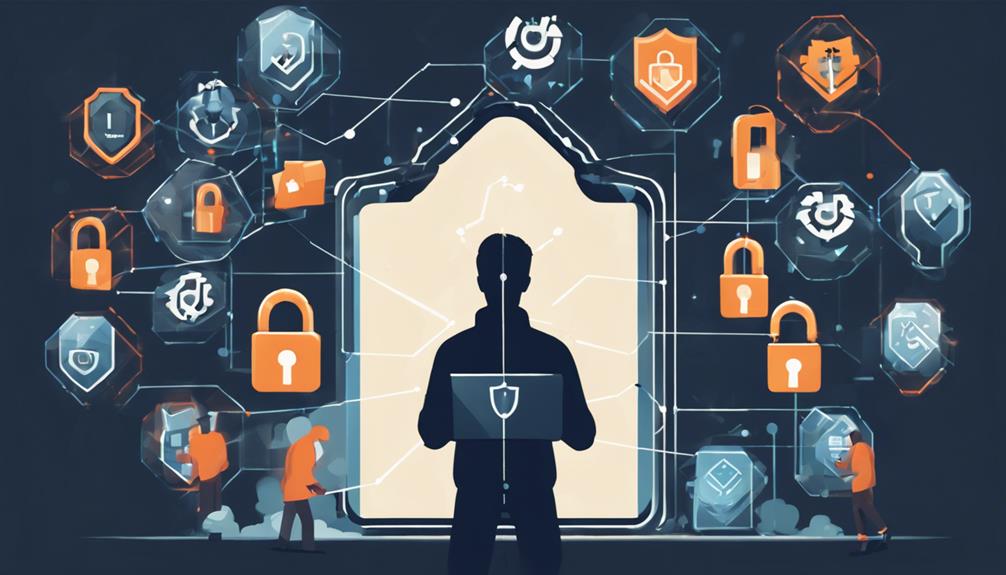To secure your mobile data capture solutions, the stakes are high. Ensuring the protection of sensitive information requires a strategic approach that goes beyond just setting up a passcode. By understanding the potential risks and implementing advanced security measures, you can fortify your data against threats in an increasingly interconnected world. It’s not just about securing your devices; it’s about safeguarding your organization’s integrity and reputation.
Determine Security Needs
When implementing mobile data capture solutions, determining your security needs is paramount. Begin by conducting a thorough risk assessment to identify potential vulnerabilities and threats to your data. This evaluation will help you understand the specific security requirements of your organization and the level of protection needed.
One crucial aspect of securing your mobile data capture solutions is data encryption. By encrypting the data at rest and in transit, you can ensure that even if unauthorized access occurs, the information remains unreadable and protected. Implementing strong encryption algorithms will add an extra layer of security to your data, safeguarding it from malicious actors.
Find Potential Solutions
To fortify the security of your mobile data capture solutions, the next step is to explore potential solutions that align with your identified security needs. Encryption techniques play a vital role in safeguarding your data during capture, transmission, and storage. Implementing strong encryption protocols ensures that sensitive information remains protected from unauthorized access. Additionally, robust data protection measures such as access controls and user authentication mechanisms are essential for maintaining the integrity of your captured data.
Network security is another crucial aspect to consider when securing your mobile data capture solutions. Utilizing firewalls, intrusion detection systems, and secure VPN connections can help defend against external threats and unauthorized network access. Effective device management is also key in ensuring the security of your data capture solutions. Implementing mobile device management tools can assist in monitoring device activity, enforcing security policies, and remotely wiping data in case of loss or theft.
Choose a Secure Solution
Considering the critical importance of security in mobile data capture solutions, selecting a secure solution is a pivotal decision. When choosing a solution, make sure to focus on the following key aspects:
- Data encryption: Ensure that the solution offers robust data encryption capabilities to protect sensitive information from unauthorized access.
- Cloud storage: Opt for solutions that provide secure cloud storage options to prevent data loss and ensure accessibility from anywhere.
- User authentication: Look for solutions that offer multi-factor authentication to enhance user verification and prevent unauthorized access.
- Device monitoring: Choose a solution that includes device monitoring features to track the usage of mobile devices and detect any suspicious activities.
- Regular updates: Select a solution that receives frequent updates to address security vulnerabilities and ensure ongoing protection of your data.
Develop a Security Plan
As you embark on the journey of developing a security plan for your mobile data capture solution, it is essential to lay a strong foundation that prioritizes safeguarding sensitive information. Start by conducting a thorough risk assessment to identify potential vulnerabilities and threats to your data. This evaluation will enable you to understand the specific risks your solution may face and develop targeted security measures to address them effectively.
One of the key components of your security plan should be data encryption. Implementing robust encryption protocols will ensure that any information captured or transmitted by your mobile data solution remains secure and protected from unauthorized access. By encrypting data both at rest and in transit, you can significantly reduce the risk of data breaches and safeguard the confidentiality of your sensitive information.
Train the Team on Security
Conducting a thorough risk assessment has armed you with valuable insights into the vulnerabilities that your mobile data capture solution might encounter. Now, it’s crucial to train your team on security best practices and enhance their security awareness. Here are some key steps to ensure your team is well-prepared:
- Regular Training Sessions: Conduct frequent training sessions to keep your team updated on the latest security threats and protocols.
- Simulated Phishing Exercises: Implement simulated phishing exercises to test your team’s ability to identify and respond to phishing attempts.
- Access Control Guidelines: Educate your team on access control best practices to ensure only authorized personnel can access sensitive data.
- Incident Response Protocols: Train your team on incident response procedures to effectively handle security breaches.
- Security Policy Review: Regularly review and reinforce your organization’s security policies to keep them aligned with current threats.
Implement the Solution
To successfully implement the mobile data capture solution, a structured approach is essential. Begin by implementing robust data encryption measures to protect the information being captured and stored on mobile devices. Utilize strong encryption algorithms to safeguard sensitive data from unauthorized access or breaches.
Additionally, establish stringent access control mechanisms to regulate who can view or manipulate the captured data. This involves setting up authentication processes, such as passwords, biometrics, or multi-factor authentication, to ensure that only authorized personnel can access the information.
Regularly Update the System
For optimal security and efficiency, regular system updates are crucial in maintaining the integrity of your mobile data capture solution. Keeping your system up to date ensures that vulnerabilities are patched, performance is optimized, and new features are integrated seamlessly. Here are five key reasons why updating your system is essential:
- Enhanced Security: Updates often include security patches that protect your data from evolving threats.
- Improved Performance: System updates can enhance the speed and overall performance of your mobile data capture solution.
- Bug Fixes: Regular updates address any existing bugs or issues, ensuring smooth operation.
- Compatibility: Updates help maintain compatibility with other software and devices, preventing potential conflicts.
- Feature Enhancements: New features and functionalities are frequently added through updates, enhancing the capabilities of your data capture solution.
Frequently Asked Questions
How Can I Ensure Compliance With Data Protection Regulations?
To ensure compliance with data protection regulations, utilize data encryption for secure transmission and storage. Implement compliance assurance measures such as regular audits and documentation. Stay vigilant in monitoring and updating your security protocols.
What Are the Common Pitfalls to Avoid in Mobile Data Security?
When navigating the digital wild west, steer clear of the pitfalls that jeopardize your data. Safeguard your mobile fortress with impenetrable encryption walls and vigilant breach prevention strategies. Protect your kingdom, brave warrior.
Is It Necessary to Encrypt All Data Stored on Mobile Devices?
Encrypting all data on mobile devices is crucial for security. It enhances protection and ensures the effectiveness of security protocols. Failing to encrypt can expose sensitive information. Always prioritize data encryption on mobile devices for robust security measures.
How Do I Handle Security Incidents or Breaches Effectively?
When handling security incidents or breaches effectively, prioritize incident response and breach management. Conduct thorough security incident analysis to identify the root cause, then implement swift containment strategies to minimize potential damage and protect your data.
What Measures Can Be Taken to Protect Against Social Engineering Attacks?
To protect against social engineering attacks, focus on user training in cybersecurity awareness. Implement robust password management and authentication protocols. Educate users on recognizing phishing attempts. Regularly update security policies to adapt to evolving threats and maintain a secure environment.




